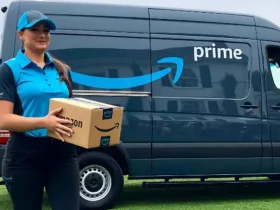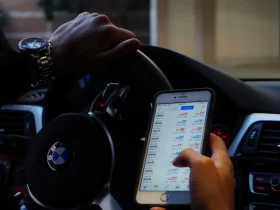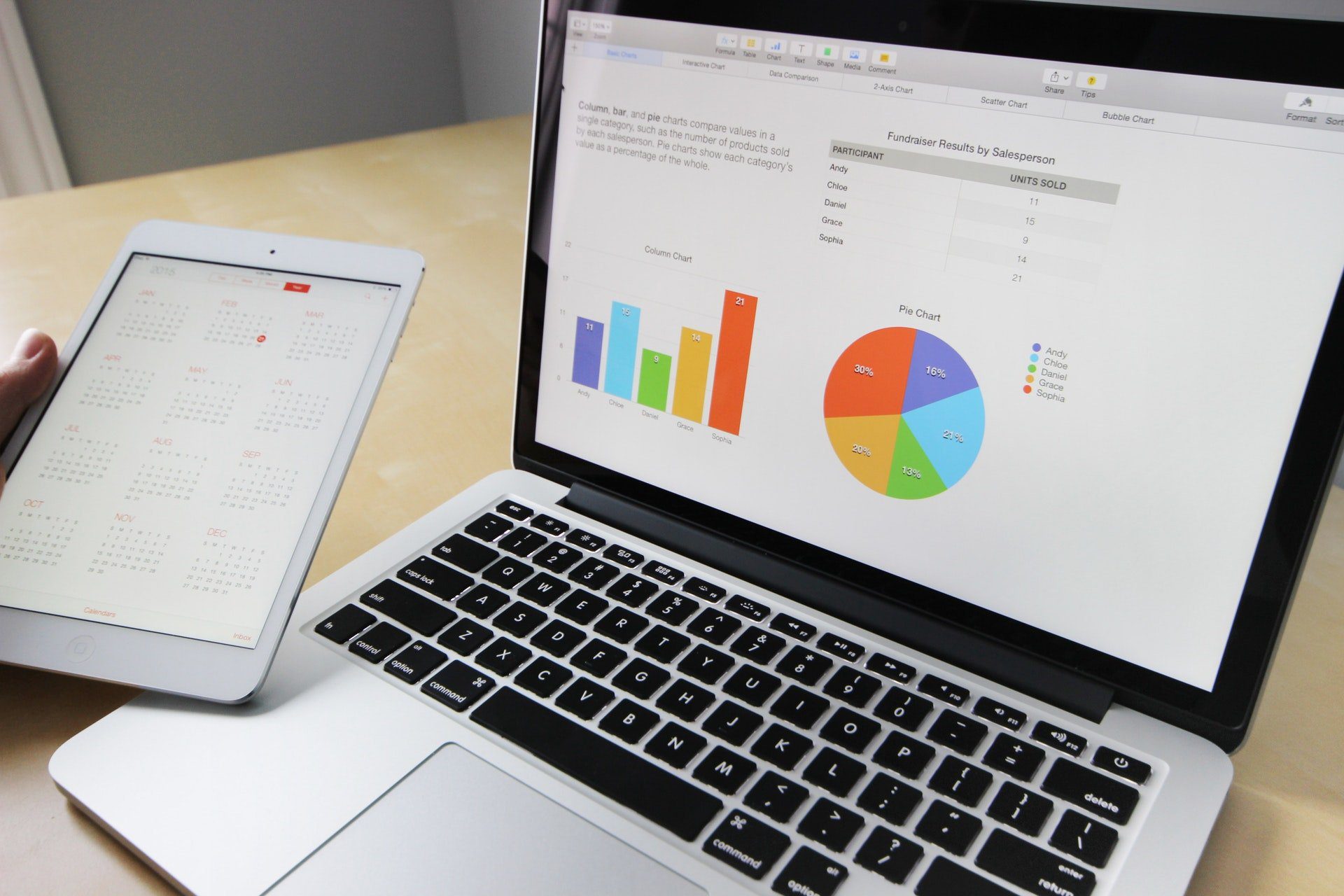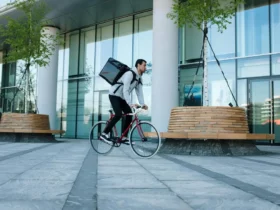Ever wondered if zipping around town delivering meals for Uber Eats makes you a business owner? Well, it’s a common question I come across, and the answer might surprise you. It turns out, when you’re delivering for Uber Eats, you’re not just a courier; you’re actually in charge of your own mini-enterprise.
Navigating the world of gig work can be as tricky as finding that elusive customer’s front door. But one thing’s for sure: driving for Uber Eats is self-employment. You’re the boss, the worker, and everything in between. It’s not just about the freedom of the road; it’s about the freedom of running your own show.
Understanding Self-Employment in the Gig Economy
Definition and Characteristics of Self-Employment
For starters, self-employment is when I’m essentially working as my own boss. That means I’m the one in charge of the day-to-day operations of my mini-enterprise. I set my hours and manage my expenses, and the success or failure of the business rests on my shoulders. There’s no higher-up to report to, no tedious performance evaluations, and certainly no office politics weighing me down.
The characteristics of self-employment are pretty straightforward. I have to be my own motivator, decision-maker, and problem-solver. Flexibility is a major perk, along with the freedom to choose whom I work with and how much or little I want to work. I’ve noticed that these traits are attracting many to the gig economy.
The Evolution of Self-Employment with the Rise of Gig Economy
Onto how things have changed. The gig economy didn’t just pop up out of nowhere; it’s been a game-changer in redefining self-employment. Once upon a time, if I mentioned I was self-employed, you might’ve imagined a storefront with my name on it. These days, that storefront’s gone digital, and my business is carried out on the streets or wherever my services are needed.
Tools like smartphones and apps are at the heart of this new wave. They connect me to customers—like those craving a meal from their favorite joint but not wanting to leave their couch. Uber Eats, and its kin has given me the means to operate as a self-employed individual, delivering convenience to doorsteps. It’s this modern twist on self-employment that’s both an opportunity and a challenge, constantly evolving with technology and cultural shifts.
Driving for Uber Eats makes it clear: self-employment isn’t static; it’s as dynamic as the society it operates within. In places buzzing with tech innovation, the gig economy is in full swing, propelling workers like me into accidental entrepreneurship and an ever-adapting notion of what it means to work for oneself.
The Financial Aspects of Being an Uber Eats Driver
Tax Implications for Uber Eats Drivers
Diving into the tax implications, the first thing that struck me was how my earnings from Uber Eats deliveries form the backbone of my tax responsibilities. Given that I’m not an employee but an independent contractor, it falls on me to self-assess and report my income accurately to the IRS. This means I need to be meticulous with my Annual Tax Summary and other documentation Uber Eats provides.
Working through my tax return, I know I have to report all the details of my earnings, which includes not only my gross fares but also the tips I’ve thankfully received from customers. I’ve learned that Uber Eats doesn’t withhold taxes for me, so it’s up to me to ensure I put aside a portion of my earnings for tax payments. To further complicate matters, my tax return isn’t just about adding up income – I also have to factor in my expenses related to the delivery work.
Navigating Tax Deductions as an Uber Driver
Figuring out which expenses I can write off on my taxes has been a game-changer. For example, I’ve been tracking my mileage closely because that’s a major deductible expense. The IRS allows me to claim a standard mileage deduction, which simplifies the process instead of itemizing every single car-related expense. I’ve been keeping a detailed spreadsheet of not just my miles but also of my parking fees and tolls because, thanks to IRS Publication 463, I know these are all tax-deductible when incurred for business purposes.
Here’s a simple breakdown of how these tax deductions have played out for my situation:
| Description | Amount ($) |
|---|---|
| Total Earnings | 15,000 |
| Deductible Expenses | -6,000 |
| Taxable Profit | 9,000 |
For every dollar I can show as a legitimate business expense, that’s one less dollar I’m taxed on. So the miles I’ve cruised down city streets, those late-night drives, and even the apps like Hurdlr that I use to track my mileage all find their place in reducing my taxable income.
Income Considerations and Earning Potential
When it comes to earning potential, the flexibility that comes with being an Uber Eats driver is certainly one of the biggest draws. My gross earnings reflect the direct compensation for the deliveries I’ve made, and I cherish every tip that’s come my way for the level of service I’ve provided.
However, it’s important to recognize that this income is not guaranteed – it fluctuates based on factors like hours worked, demand, and even the season. Moreover, the fees that Uber charges for their service are deductions I have to consider when calculating my actual take-home pay. It takes some financial acumen to distinguish between what shows up in my earnings summary and what’s truly reflective of my business’s profitability.
Being savvy about which deductions are valid and understanding how Schedule C and SE work together not only gives me insight into my true net income but also helps me plan better for those unavoidable tax obligations. Keeping tabs on the earnings potential and balancing the expenses is all part of the ongoing financial management that’s essential for my success as an Uber Eats driver.
Capturing and optimizing my earning potential isn’t just about putting more hours behind the wheel; it’s also about strategizing to work smarter. By analyzing peak meal times and leveraging bonuses and promotions, I aim to maximize my earnings while minimizing idle time. It’s a constant learning curve that demands persistence and, often, a fair bit of creativity.
The Autonomy of Working with Uber Eats
Flexibility and Independence in Delivery Work
One of the undeniable perks of being an Uber Eats driver is the remarkable level of flexibility and independence it brings to the table. I’m not just talking about the freedom to choose when and where I work but also the control over the entire work process. There’s no need to clock in or out. Instead, I have the power to decide which orders to accept and plan my day around other personal responsibilities. Whether I’m a night owl who thrives in the late hours or someone who prefers the calm of the dawn, Uber Eats fits into my lifestyle, not the other way around.
With Uber Eats, my car or bike becomes my office, and the city is my canvas. It’s a dynamic work environment that’s miles apart from the monotony of a 9-to-5 desk job. The streets I choose to navigate and the strategies I formulate for the busiest hours directly impact my earnings and work satisfaction. This aligns perfectly with those of us craving autonomy and those who may not fit in with traditional workplace cultures or schedules.
Setting Prices and Negotiating Compensation
Onto the topic of setting prices and negotiating compensation—this area tends to be a bit murky. The common misconception is that as an independent contractor, one must simply accept what’s offered. However, the reality with Uber Eats provides a different narrative. While it’s true that I can’t outright set my prices as I would in a traditional freelance setting, Uber Eats presents me with a variety of offers that I can choose to accept or decline.
Every offer details the base pay, potential incentives, and the customer’s tip, allowing me to make informed decisions about the jobs I take. Some deliveries are close by and quick, yet others might require extensive travel or wait times; the latter, of course, should ideally come with a higher reward. By evaluating each offer, I’m essentially negotiating my compensation indirectly. I have to consider factors like distance, estimated time, and potential earnings before accepting an order. In essence, I’m running my own business where strategic decisions play an essential role in my success.
The Challenges of Self-Employment in Food Delivery
Addressing the Lack of Traditional Employment Benefits
Being an Uber Eats driver, like many self-employed gigs, means waving goodbye to the perks that come with being an employee. Employer-provided health insurance, paid time off, and retirement plans are off the table. I’ve had to be proactive about securing my own health insurance and setting aside cash for vacation and retirement, which definitely takes discipline and financial planning. For example, if I want to take a week off, there’s no paid leave; it’s all out of my pocket.
I’ve discovered that for health insurance, I could potentially deduct premiums to soften the blow at tax time. Sure, this might not replace a comprehensive employee benefits package, but it does help with the financial impact.
Managing Inconsistent Incomes and Workload
One of the biggest adjustments for me has been the roller-coaster ride of earnings. Some weeks, it’s a feast; other weeks, famine. Inconsistent income makes budgeting tricky since I never really know how much I’ll make any given month. This uncertainty means I have to plan for the lean times during the bountiful ones.
It’s just as unpredictable with my workload. When demand is high, I can be swamped with deliveries, hustling non-stop. Then suddenly, it can slow to a crawl without warning. This lack of stability doesn’t just affect my wallet; it can be exhausting to manage and demands a level of flexibility that not everyone is comfortable with or capable of. The secret is to stay adaptable and use the slow periods wisely—perhaps by tracking expenses or optimizing future work strategies.
Balancing out these uneven patterns requires a certain savviness—maybe even a financial cushion and certainly a well-thought-out budget to ensure I can cover all my expenses, personal and business, during those inevitable downtimes.
Legal and Regulatory Landscape for Uber Eats Drivers
Navigating the complex web of legal and regulatory requirements as an Uber Eats driver can be daunting. It’s not just about getting from point A to B; it’s about understanding the rules that govern this new frontier of work. Let’s dive into how these regulations are shaping up around the world and what they mean for gig workers like me.
International Perspectives on Gig Workers’ Rights
Across the globe, countries are grappling with the classification of gig workers. Where do we fit in the traditional labor market framework? In some places, gig workers have won rights traditionally reserved for employees, such as minimum wage and paid leave. For instance, the UK’s Supreme Court ruled that Uber drivers are workers, not self-employed, granting them a variety of employment protections.
Similarly, the European Union is actively exploring legislation to improve the working conditions for people like me in the gig economy. Gig workers’ status as independent contractors or employees continues to be a subject of international legal debate, and it’s a big deal because it affects our social and financial security.
Evolving Laws and Their Impact on Gig Workers
Here in the US, the legal landscape is evolving too. The debate often centers on our status as independent contractors versus employees. AB5, a California law, sought to reclassify many gig workers as employees, though it’s still a hot topic of legal wrangling. Proposition 22, passed by California voters, swung the pendulum back, allowing app-based transportation and delivery drivers to remain independent contractors with some benefit concessions.
These laws and regulations have a direct impact on my life and the lives of countless other drivers. They determine not just how we’re classified but also how we’re protected—and they have a say in the stability and benefits we can expect from this line of work. Keeping up with these changes is crucial for someone in my shoes because they influence the strategies I must employ to maintain my independence and financial well-being.
Whether it’s adjusting to new tax laws or fighting for rights in the courts, it’s clear that the story of gig workers’ legal status is continually being written. What’s certain is that the conversation around our rights and protections is far from over. As for me, I’ll keep an eye on these changes to maneuver through this landscape as smoothly as possible.
The Future of Self-Employment and Gig Economy
Trends and Predictions in Gig Work
The gig economy’s growth shows no signs of slowing down. We’re seeing a societal shift towards more flexible work arrangements, and this paints a dynamic future for gig work. Here are some trends I’ve been noticing:
- Diversification of Income Sources: More workers are joining the gig economy, not just for full-time work but also to supplement their income. I’ve talked with plenty of people juggling multiple platforms like Uber Eats, Postmates, and DoorDash just to maximize their earnings.
- Expansion of Gig Platforms: It’s not just about ride-sharing or food delivery anymore. From freelance coding to online tutoring, new gig platforms are continually emerging to cater to a wide array of professional services.
- Greater Emphasis on Workers’ Rights: The clamor for better protection and benefits for gig workers is getting louder. Several countries are now reevaluating labor laws to ensure fair treatment for these accidental business owners as traditional employment lines blur.
Preparing for a Shifting Work Environment
With these trends, it’s vital for gig workers like us to adapt and prepare. So, what can we do? Here are some strategies I’m considering:
- Adopt a Business Mindset: Viewing gig work as running a small business helps us understand the importance of strategic planning, savings, and smart tax practices.
- Equip Ourselves with Skills: The gig economy is competitive. Whether it’s learning new delivery route optimization or exploring other gig services that could be in demand, improving our skills could be the difference between scraping by and thriving.
- Stay Informed: With laws and regulations continuously changing, keeping up-to-date with the latest information is critical. It might affect everything from how we file taxes to the protections we can avail ourselves as self-employed individuals.
As I navigate through the gig economy, ensuring I’m prepared and informed makes me feel more secure about my place in this burgeoning field. The landscape is shifting, and who knows what exciting opportunities might come up next?
Embracing the Gig Economy Responsibly
Navigating the gig economy as an Uber Eats driver certainly classifies as self-employment, and with that comes a unique set of financial responsibilities. I’ve found that staying on top of taxes, managing income fluctuations, and understanding Uber’s fees are crucial to success. But it’s not just about the present; it’s also about looking ahead.
By diversifying income streams, staying adaptable, and keeping a keen eye on the evolving landscape of gig work, I’m setting myself up for a sustainable future. It’s clear that with the right approach and a bit of savvy, thriving in the gig economy is well within reach. Here’s to making the most of the opportunities it presents!
FAQ – Frequently Asked Questions
What happens if I get injured while working for Uber Eats?
Since you’re an independent contractor and not an employee, you’re not covered by workers’ compensation through Uber Eats. It’s advisable to have personal health insurance and consider disability insurance.
Do I need to register as a business if I work for Uber Eats?
This depends on your local laws and how much you earn. In many cases, you don’t need to formally register as a business, but it’s always best to check with a local tax professional.













